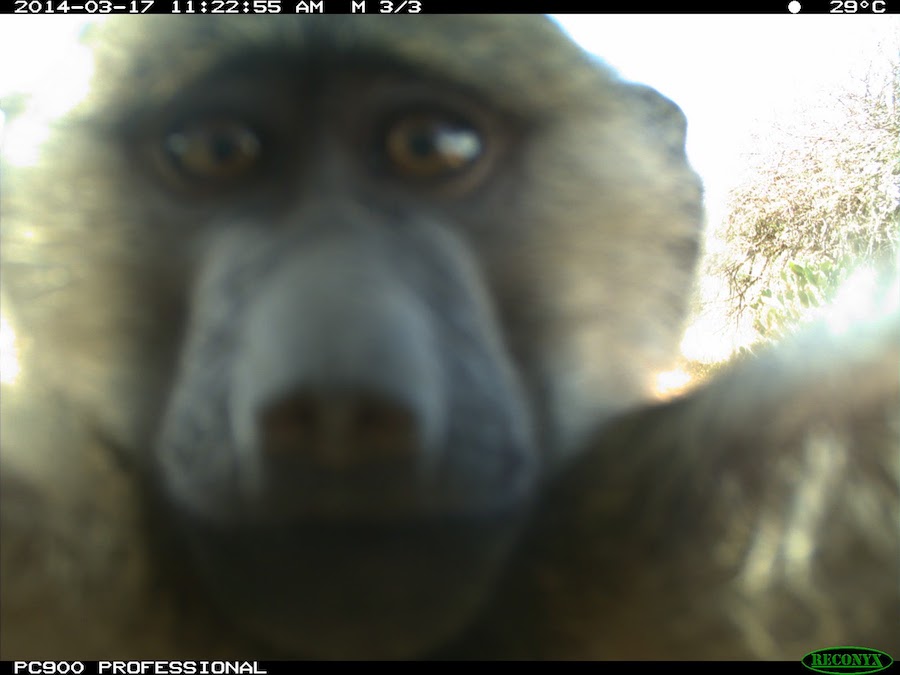
UC Davis primatologists study primates and predator interactions in a new way
It is often very difficult for researchers to study animals without influencing their behavior. Lynne Isbell, a professor in the UC Davis anthropology department and Laura Bidner, a postdoctorate working with Isbell, came up with a simple solution to study predator and prey interaction: remove themselves from the field. That was the idea behind their paper published in Behavior in 2016 on the latest research on primates in Laikipia, Kenya.
At the 49107 sq. acres Mpala Research Centre, two species of primates were studied: olive baboons and vervet monkeys. The study also examined the activity of a common predator of both species: leopards.
“We know leopards avoid people and they’re shy,” Isbell said. “We follow primates around to study them and don’t see any leopard predation.”
Bidner and Isbell initially came up with the research idea in 2009, and in 2012 they received preliminary funding from the National Science Foundation. Bidner then spent five months in the study area to find out how many groups of primates lived, where they slept, and to estimate how many leopards hunted there.
“This data turned out to be critical for the bigger grant,” Bidner said.
To study how predator and prey interacted with each other, the team of researchers fit baboons, vervets and leopards with GPS radio collars. Two audio recorders were also placed near their sleeping sites for a year. Additionally, three camera traps were set up to monitor human activity near the animals’ sleeping sites.
“Studying the predator and primate interactions in this way will provide important insights into how and if primates alter their behavior when a predator is around,” said Dena Clink, a recent UC Davis Ph.D. graduate researching primate ecology and primate conservation.
While leopards tend to be solitary, female primates rarely separate from their groups. Therefore, only 12 radio collars were needed to follow the five different groups of vervets, as adult females were captured in box traps, collared, and then let go. Aside from using bigger cage traps, the same process occurred for the baboons. However, the team could only get six out of the eight planned collars on the female baboons.
“Olive baboon males and juveniles were crazy over the maize in the cages ,” Isbell said. “The females were a lot more hesitant.”
The collars still went to good use. The team was able to convert the leftover baboon collars to fit leopards, and replaced two of the collars that had died early on. However, looking through images in the camera traps, more uncollared leopards were found to frequent the study area.
“There were at least seven leopards in the area,” Isbell said, “They’re supposed to be territorial!”
While seven uncollared leopards were found on the camera traps, it is believed that even more resided in the area.
In two instances, collared leopards killed collared primates. One of those times, Bidner heard a vervet alarm call near the research center, and later realized what it meant.
“A few days later we figured out what happened after we uploaded the [GPS] data,” Bidner said.
Recordings at the vervets’ sleeping site revealed that they gave ‘leopard’ alarm calls most frequently near dusk and dawn. When those calls were made, the leopard’s GPS collars showed them leaving the area. The data shows leopards hunt vervets during the day, when less alarm calls were made to ward off the predators.
Baboons are hunted at night by leopards. This is naturally thought to be due to baboons not being able to fight off an attack while sleeping.
Olive baboons are larger and more aggressive than vervets. This suggests baboons may be less vulnerable to predation, but the study proves otherwise. Despite the differences between the two primates, they were both similarly targeted by the leopard.
“The predation rate for baboons and vervets was around 5 percent,” Isbell said.
In past studies, researchers have to look at several factors to estimate the rate of predation on a species. This includes counting the number of animals every day and searching for carcasses. Often, these traditional methods can be unreliable due to individuals moving or predators dragging their meal far away. In this study, the researchers were able to determine predation rate and observe predator and prey interaction more accurately.
“This is not necessarily groundbreaking,” Bidner said. “It’s more of a cautionary tale against assumptions made of predator and prey interactions.”
Written by: Rachel Paul — science@theaggie.org



